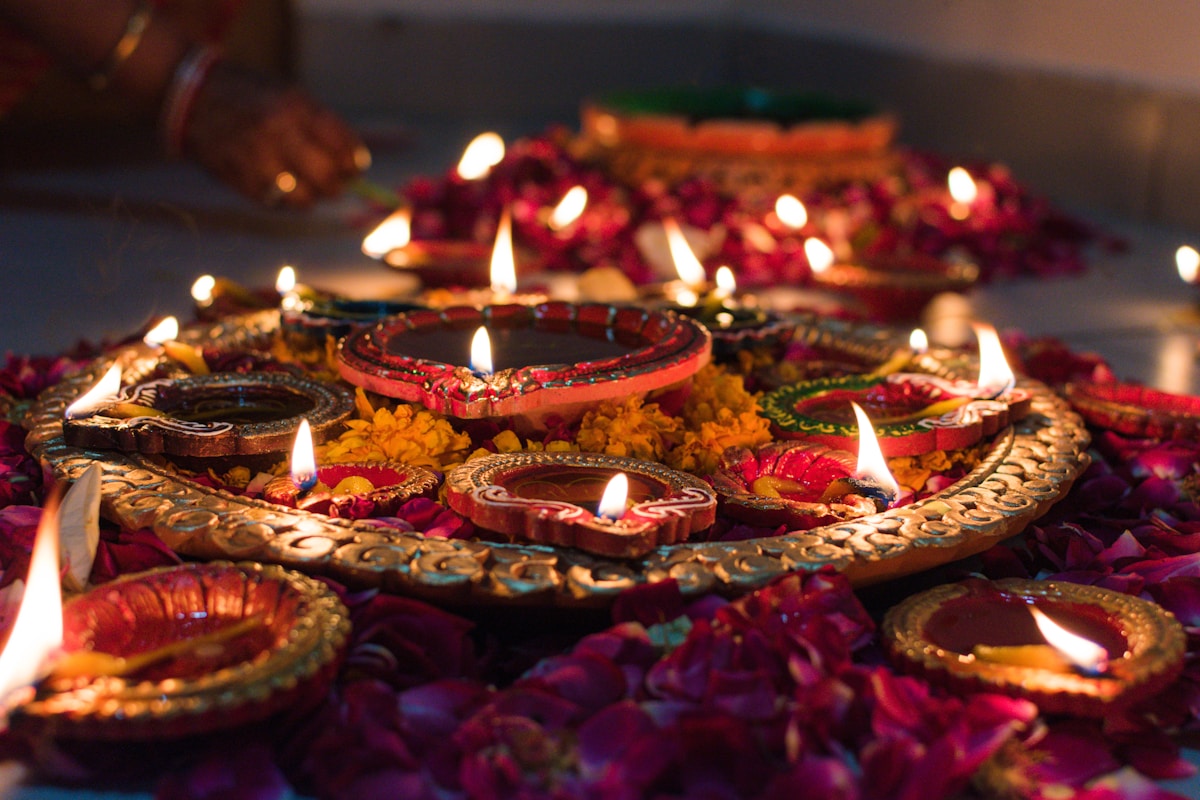diwali - the festival of lights

Diwali or Deepavali, also known as the “festival of lights,” is one of the biggest festivals celebrated by Indians all around the globe. This grand festival is an integral part of India’s vast cultural landscape and signifies the victory of good over evil, and light over darkness. It is common to celebrate Diwali by lighting lamps (called diyas) and bursting crackers.
Every year, this festival falls on a new moon day or Amavasya. And because it is celebrated according to the lunar calendar, the date changes every year.
On Diwali, every city, town and village is lit up with thousands of lamps everywhere. Streets and buildings are usually lit up with colorful lights, and homes are thoroughly cleaned and beautifully decorated. People also make traditional rangolis, dress up extravagantly, visit each other, exchange gifts and sweets, conduct rituals and prayers, and come together to enjoy feasts and burst firecrackers.
History
In northern India, Diwali is observed as a celebration of Lord Rama’s return along with his wife Sita and brother Lakshman to Ayodhya after spending fourteen years in forest exile. On this moonless night, as per Hindu mythology, the people of Ayodhya welcomed them home with great enthusiasm by lighting thousands of lamps. The tradition has continued to date.
In western states, the main highlight of Diwali is worshipping Lakshmi, the goddess of wealth and prosperity, and celebrating the beginning of a new year. In eastern parts of India, the day of Diwali is devoted to Kali and is celebrated as Kali Puja. In southern India, Diwali is celebrated because historically it marks the day when Krishna slew the notorious demon Narakasura.


